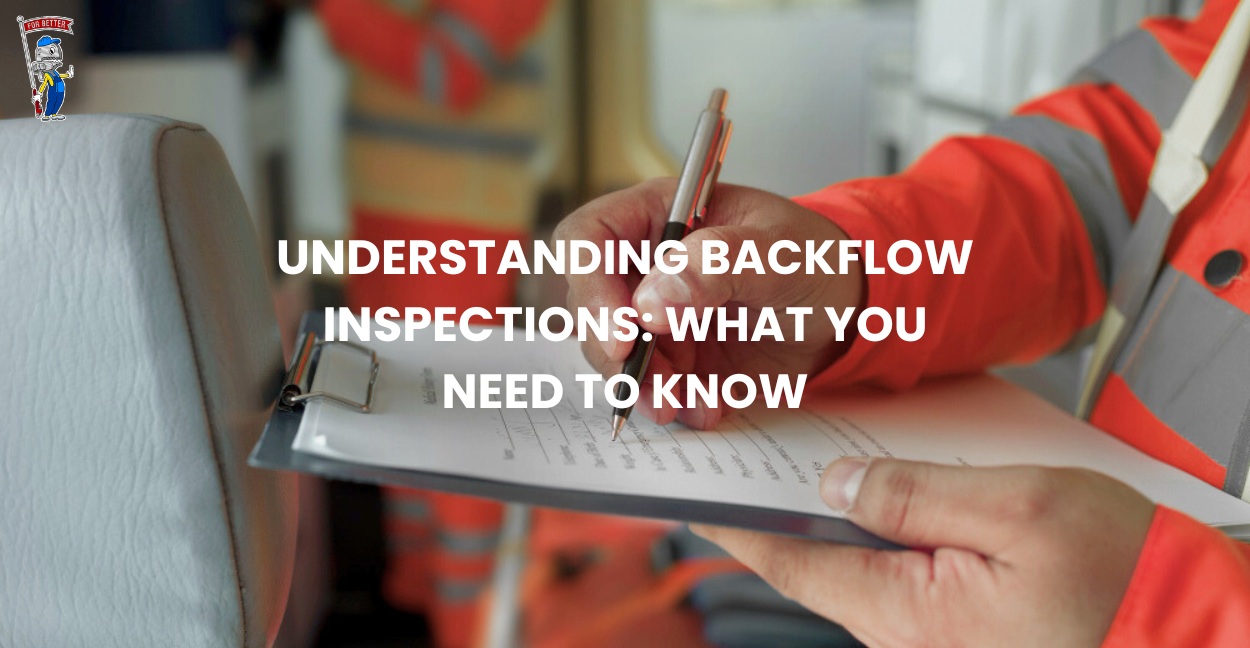What is a Backflow Inspection?
Backflow inspection is a vital process in plumbing and water supply systems that ensures the safety and purity of drinking water. It involves checking for any potential backflow of contaminated water into the clean water supply, which could pose serious health risks if not addressed promptly. In this article, we’ll explore what backflow inspection entails, why it’s crucial, and how it contributes to maintaining clean and safe water for communities.
Understanding Backflow
What is Backflow?
Backflow refers to the undesirable reversal of water flow in a plumbing system, where contaminated water flows back into the clean water supply. This can occur due to backpressure or back-siphonage, both of which can lead to water contamination if not prevented or detected early.
Causes of Backflow
Backflow can occur due to various reasons, including changes in water pressure, cross-connections between clean and contaminated water sources, and malfunctioning backflow prevention devices. External factors such as pipe bursts or firefighting activities can also contribute to backflow incidents.
Types of Backflow
There are two main types of backflow: backpressure backflow and back-siphonage. Backpressure backflow occurs when downstream pressure exceeds the supply pressure, forcing water to flow backward. Back-siphonage, on the other hand, occurs when negative pressure in the supply line causes water to be drawn backward.
Importance of Backflow Inspections
Ensuring Water Safety
Backflow inspections play a crucial role in ensuring the safety and purity of drinking water. By identifying potential backflow hazards and addressing them promptly, inspections help prevent the contamination of the water supply with harmful substances or pathogens.
Regulatory Compliance
Many regulatory bodies and water authorities require regular backflow inspections to comply with safety standards and regulations. Property owners, especially those with commercial or industrial facilities, may be legally obligated to conduct annual backflow inspections and maintain proper backflow prevention devices.
Preventing Contamination
One of the primary purposes of backflow inspections is to prevent water contamination. Contaminated water can contain harmful chemicals, bacteria, or other contaminants that pose health risks to consumers. Regular inspections help identify and mitigate these risks, ensuring that drinking water remains safe for consumption.
The Backflow Inspection Process: Ensuring Water Safety
The backflow inspection process is a critical procedure designed to safeguard water quality and prevent the contamination of clean water supplies. It involves thorough assessments, testing, and maintenance of backflow prevention devices to ensure they are functioning correctly and effectively.
1. Initial Assessment
The process begins with a comprehensive assessment conducted by a certified backflow inspector. This assessment involves examining the property’s plumbing system to identify potential backflow hazards. The inspector looks for factors such as cross-connections, which are points in the plumbing system where potable (clean) water and non-potable (contaminated) water can come into contact.
2. Testing Equipment Setup
Once potential hazards are identified, the inspector sets up specialized testing equipment. This equipment is crucial for measuring water pressure and flow direction within the plumbing system. It helps determine if backflow prevention devices are in place and operating as intended.
3. Testing Procedure
The testing procedure involves measuring water pressure at various points in the plumbing system. The goal is to ensure that water flows in the desired direction, from clean water sources to outlets, and that there are no instances of water flowing backward, which could lead to contamination.
4. Device Maintenance
If backflow prevention devices are installed on the property, the inspector conducts a thorough inspection of these devices. Common backflow prevention devices include air gaps, check valves, and reduced pressure zone (RPZ) assemblies. The inspector checks these devices for proper installation, functionality, and maintenance.
5. Documentation
Following the inspection and testing processes, the inspector provides a detailed report of their findings. This report includes information about the property’s plumbing system, any identified backflow hazards, the condition of backflow prevention devices (if present), and recommendations for corrective actions or maintenance.
Key Considerations in the Inspection Process
- Regulatory Compliance: Backflow inspections are often mandated by local regulations and water utility authorities. Property owners are required to comply with these regulations to ensure the safety of the water supply.
- Frequency of Inspections: The frequency of backflow inspections varies depending on factors such as property type (residential or commercial) and the level of risk associated with the plumbing system. Commercial properties typically require annual inspections, while residential properties may have less frequent inspection requirements.
- Professional Expertise: Certified backflow inspectors have the knowledge, training, and experience to conduct thorough inspections and identify potential backflow hazards. Property owners are encouraged to engage professional inspectors to ensure accurate assessments and compliance with regulations.
- Corrective Actions: In cases where backflow hazards or device failures are identified during an inspection, corrective actions are necessary. This may involve repairing or replacing backflow prevention devices, addressing cross-connections, or implementing additional safeguards to prevent contamination.
Benefits of Regular Backflow Inspections
Early Detection of Issues
Regular backflow inspections allow for the early detection of potential issues or hazards in the water supply system. Identifying and addressing these issues promptly can prevent costly repairs or health-related problems down the line.
Cost Savings in the Long Run
Investing in regular backflow inspections can lead to cost savings in the long run. By preventing water contamination, minimizing system failures, and ensuring regulatory compliance, property owners can avoid expensive fines, legal issues, and emergency repairs.
Peace of Mind for Homeowners and Businesses
Knowing that their water supply is safe and compliant with regulations provides homeowners and businesses with peace of mind. Regular backflow inspections demonstrate a commitment to water quality and safety, building trust with consumers and stakeholders.
FAQs About Backflow Inspections
1.) What is the difference between backflow prevention and backflow inspection?
Backflow prevention refers to measures and devices implemented to prevent the backward flow of contaminated water into the clean water supply. This includes devices like check valves and air gaps. On the other hand, backflow inspection involves the actual examination and assessment of the plumbing system to identify potential backflow hazards and ensure that backflow prevention devices are functioning correctly.
2.) How often should backflow inspections be performed?
The frequency of backflow inspections depends on local regulations, the type of property, and the risk level associated with the water supply system. In general, commercial and industrial properties may require annual inspections, while residential properties may have less frequent inspection requirements. It’s crucial to check with local authorities or water agencies to determine the recommended inspection schedule.
3.) Are backflow inspections mandatory for all properties?
Backflow inspection requirements vary depending on the location and type of property. In many jurisdictions, backflow inspections are mandatory for commercial, industrial, and multi-unit residential properties. Single-family homes may not always be required to undergo regular backflow inspections, but it’s essential for homeowners to check with their local water utility or plumbing authorities for specific requirements.
4.) Can homeowners conduct their own backflow inspections?
While homeowners can perform basic visual checks on backflow prevention devices, such as ensuring they are not damaged or leaking, comprehensive backflow inspections typically require the expertise of certified professionals. Certified inspectors have the training, knowledge, and equipment to conduct thorough inspections, test backflow prevention devices, and identify potential hazards accurately.
5.) What are the potential consequences of neglecting backflow inspections?
Neglecting backflow inspections can have serious consequences, including water contamination, health risks, regulatory violations, and costly repairs. Without proper inspections and maintenance of backflow prevention devices, there is an increased risk of contaminants entering the clean water supply, leading to potential health hazards for consumers. Additionally, non-compliance with backflow prevention regulations can result in fines, penalties, and legal issues for property owners.



